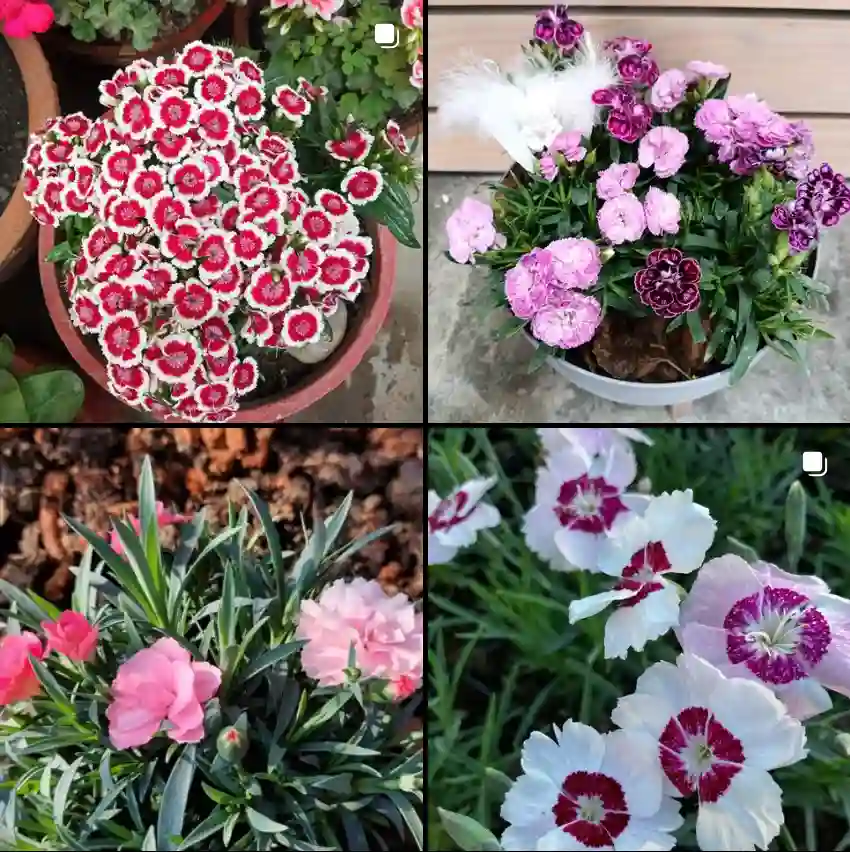
FAQs About Washingtonia Filifera
As someone deeply interested in plants, particularly palms, I often get questions about the Washingtonia Filifera, also known as the California Fan Palm. In this article, I’ll address some frequently asked questions and share my experiences with this unique palm species.
2 Species in Genus Washingtonia
Can Washingtonia Robusta and Washingtonia Filifera Hybridize?
Yes, Washingtonia Robusta and Washingtonia Filifera can hybridize. These two species, while distinct, share enough genetic similarities to crossbreed. The resulting hybrid, often referred to as Washingtonia x Filifera, combines traits from both parent plants. This hybrid palm can exhibit characteristics such as the tall, slender trunk of Washingtonia Robusta and the fan-shaped leaves of Washingtonia Filifera. It’s quite fascinating to observe how these hybrids can sometimes blend the best features of both species.
Can You Grow Washingtonia Filifera in the Pacific Northwest?
Growing Washingtonia Filifera in the Pacific Northwest can be challenging. This region is known for its cooler, wetter climate, which is not ideal for the California Fan Palm. Washingtonia Filifera thrives in hot, dry environments, such as those found in its native southern California. However, if you’re determined to grow one in the Pacific Northwest, you’ll need to provide a controlled environment, like a greenhouse, or ensure the palm is well-protected from frost and heavy rains. Even then, it might struggle to reach its full potential compared to its natural habitat.
How to Care for Washingtonia Filifera California Fan Palm?
Caring for Washingtonia Filifera requires some specific attention. Here’s what I’ve found to be crucial:
- Sunlight: This palm loves full sun. Make sure it gets plenty of direct sunlight each day to thrive.
- Watering: While it’s relatively drought-tolerant once established, young palms need regular watering to help them develop a strong root system. Allow the soil to dry out between waterings.
- Soil: Well-draining soil is essential. I recommend a mix of sand and loam to ensure proper drainage.
- Fertilizing: During the growing season, use a balanced, slow-release fertilizer to support healthy growth.
- Pruning: Remove any dead or damaged fronds to keep the palm looking its best and to prevent disease.
Is Washingtonia Filifera a Miocene Plant?
No, Washingtonia Filifera is not a Miocene plant. It is a relatively recent addition to the plant world, having evolved much more recently. The Miocene epoch, which occurred between 23 to 5 million years ago, predates the emergence of this palm species. Washingtonia Filifera is native to California and has adapted to the specific environmental conditions of its region.
When Did Washingtonia Filifera Evolve?
Washingtonia Filifera evolved relatively recently, with its origins traced back to the Pleistocene era. This period, which lasted from about 2.5 million to 11,700 years ago, saw significant climate changes that shaped the current distribution of many plant species, including the California Fan Palm. Its adaptation to arid conditions allowed it to thrive in the desert environments of southern California.
Washingtonia Filifera vs Robusta
Comparing Washingtonia Filifera with Washingtonia Robusta reveals some interesting differences:
- Appearance: Washingtonia Filifera has a more robust trunk and larger, more deeply divided leaves compared to the slender trunk and finer leaves of Washingtonia Robusta.
- Growth Rate: Washingtonia Robusta generally grows faster than Washingtonia Filifera. It can reach impressive heights more quickly.
- Climate Tolerance: Washingtonia Filifera is better suited to cooler, more temperate climates, whereas Washingtonia Robusta thrives in hotter, drier conditions.
How to Propagate Washingtonia Filifera?
Propagation of Washingtonia Filifera is usually done through seeds. Here’s a brief overview of the process:
- Seed Collection: Gather seeds from mature palm fruits.
- Preparation: Soak the seeds in water for 24 hours to soften the outer shell.
- Planting: Sow the seeds in a well-draining soil mix. Keep the soil consistently moist but not waterlogged.
- Germination: Place the seeds in a warm, sunny location. Germination can take several weeks.
What to Plant With Washingtonia Filifera?
When planting Washingtonia Filifera, consider companion plants that complement its tropical look. Good options include:
- Succulents: Their low-water needs and contrasting textures work well with the palm.
- Ornamental Grasses: Add a dynamic, airy feel to the garden.
- Desert Plants: Such as Agave and Yucca, which share similar environmental needs.
Can You Grow Washingtonia Filifera Indoors?
Growing Washingtonia Filifera indoors is challenging. It requires a lot of space and ample sunlight to mimic its natural outdoor environment. Additionally, its large size and robust growth might be impractical for indoor settings. If you want to try growing it indoors, ensure it has access to strong, direct light and consider a large indoor space.
Is Washingtonia Filifera Toxic?
Washingtonia Filifera is not considered toxic to humans or pets. Its main issues are related to its size and care requirements rather than toxicity. However, always ensure that pets do not ingest plant material, as it could potentially cause mild digestive upset.
Benefits of Washingtonia Filifera
The California Fan Palm offers several benefits:
- Aesthetic Appeal: It adds a tropical, exotic look to landscapes.
- Shade: Its large, fan-shaped leaves provide excellent shade.
- Low Maintenance: Once established, it requires minimal care compared to other palms.
Common Problems
Some common issues with Washingtonia Filifera include:
- Frost Damage: In colder climates, frost can damage the palm’s fronds.
- Pests: Watch out for pests like scale insects and spider mites.
- Watering Issues: Both overwatering and underwatering can cause problems. Ensure proper soil drainage.
In conclusion, Washingtonia Filifera is a fascinating and resilient palm, but it does have specific needs and limitations. Whether you’re considering growing it in a desert garden or curious about its traits, understanding these aspects will help you make the most of this beautiful plant.
If i die, water my plants!



